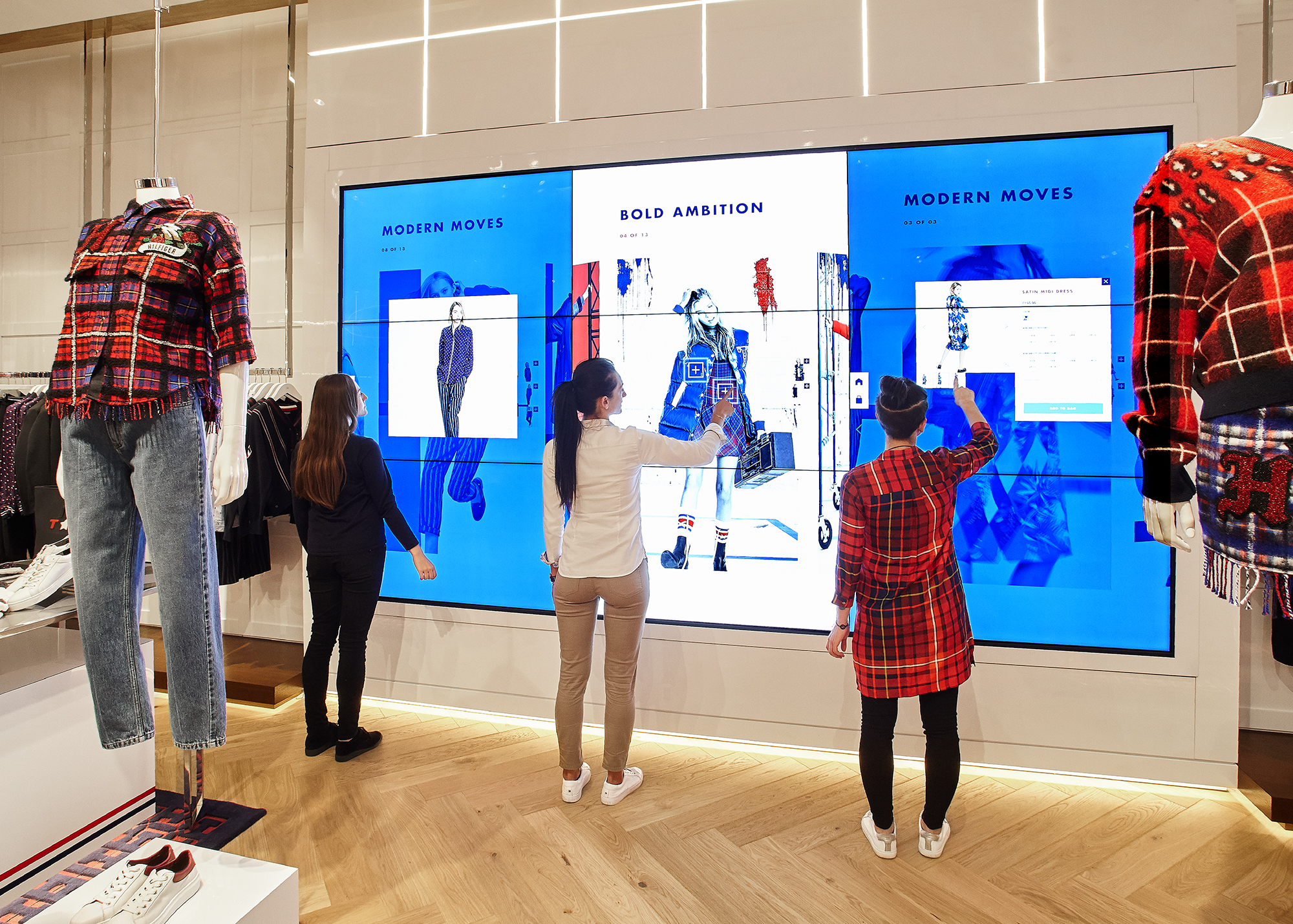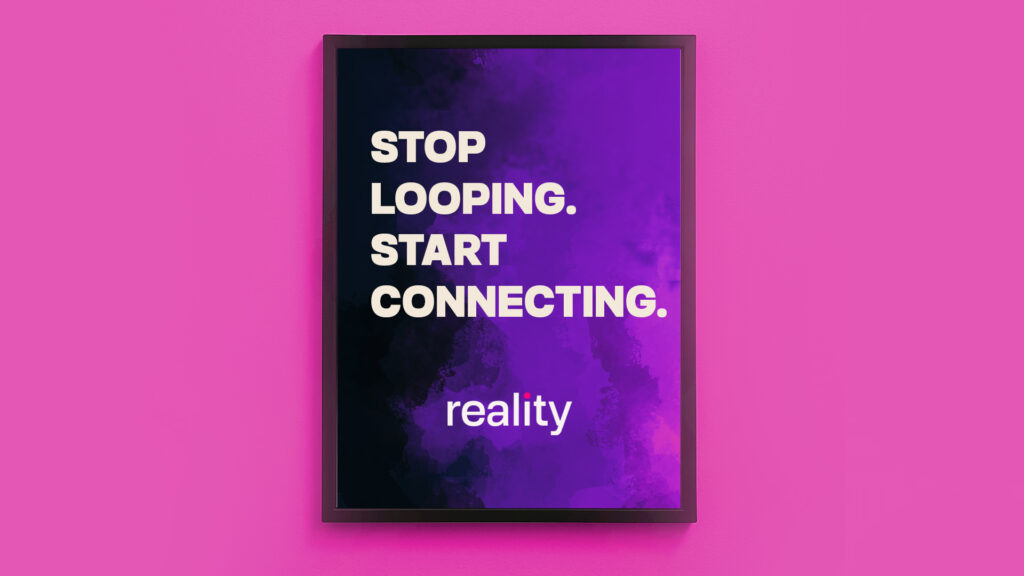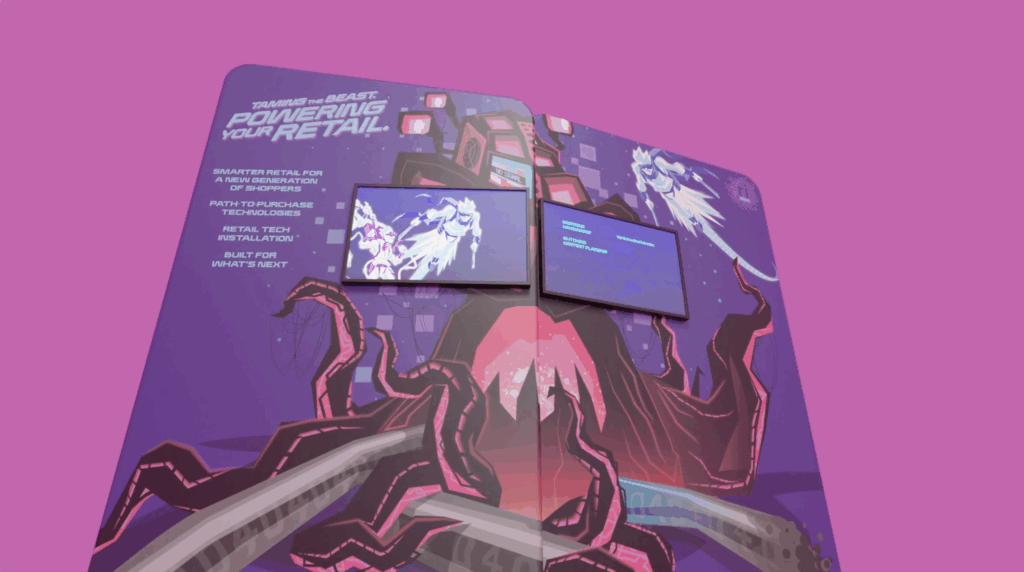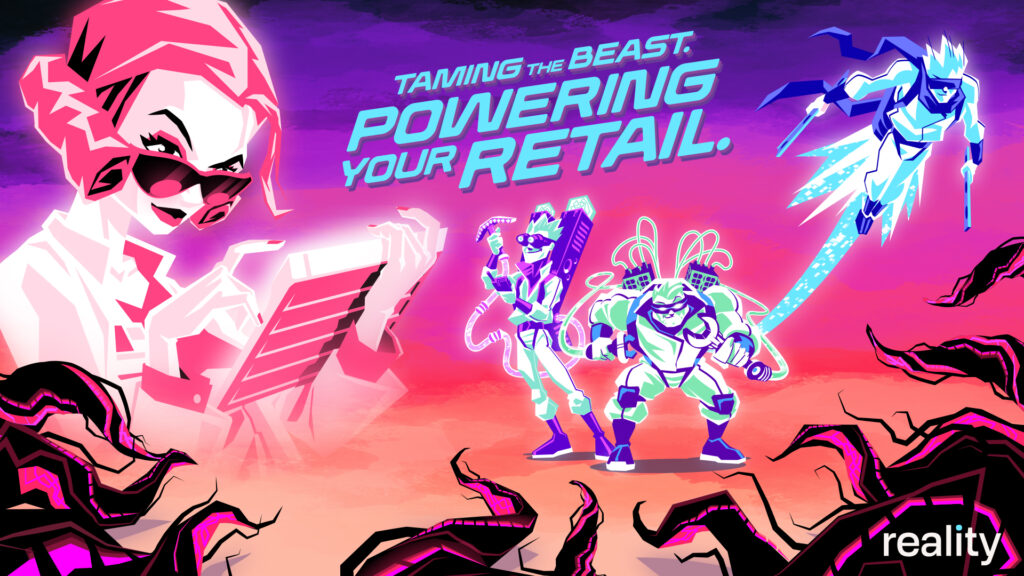In the wake of the pandemic, a seismic shift has transformed the landscape of retail. The traditional motivations driving customers to retail locations have undergone a profound evolution. Pre-pandemic, visits to brick-and-mortar stores primarily centered around functional needs—an efficient means to acquire necessary goods. However, the pandemic accelerated the digital era, offering consumers the convenience of purchasing almost everything they need from the comfort of their homes, often with rapid delivery within 24 hours.
This newfound convenience redefined the purpose of physical retail spaces. With the boundaries between work, home, and leisure blurred, people found themselves predominantly living, working, and dining within their homes. Consequently, the allure of retail locations shifted from mere functional necessity to a desire for social connection and escapism. Customers sought more than just products; they craved novel, social, and educational experiences that transcended the routine of their home-bound lives. This fundamental change in consumer behavior spurred a reimagining of retail spaces to cater to these emerging social and experiential needs.
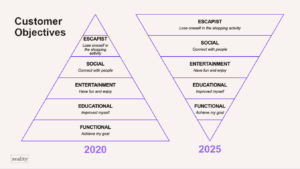
What precisely constitutes impactful experiential retail experiences, and who is leading the charge?
At the core of these experiences lies a blend of factors that transform routine shopping into an engaging and memorable event. Immersive retail spaces, the fusion of digital and physical realms, targeted audience engagement, captivating visuals, and personalized interactions form the pillars of impactful experiential retail.
Immersive Retail Spaces:
Brick-and-mortar stores are no longer just places to buy products; they’ve transformed into dynamic environments that provide an immersive journey for customers. According to recent statistics, 32% of customers actively seek in-store experiential moments. Brands are crafting spaces that stimulate the senses, employing innovative technologies, interactive displays, and thematic designs to create captivating experiences. Think pop-up installations, themed zones, or interactive displays that invite customers to explore and engage with the brand on a deeper level.
The LEGO Store in NYC begins with creating a destination while blending in traditional retail elements. Upon entering the LEGO Store, you embark on a journey to explore with other fans, friends, and family in a shop/museum that features dedicated self-service personalized products. Here, digital tools add value by facilitating wayfinding and introducing multiple personalization options, from minifigures to personal mosaic makers. Book on your phone, then create at one of the multiple kiosks. Digital plays a key role in making the store highly productive with less stuff. The number of adults visiting this location might make you forget that LEGO is a toy brand. They have captured hearts and minds, offering valuable personalization at a touchpoint where customers can interact directly with the LEGO brand.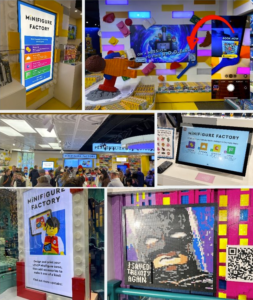
Digital-Physical Fusion:
Blending the physical and digital worlds has become a hallmark of successful retail experiences. Integrating technologies like augmented reality (AR), virtual reality (VR), QR codes, and digital kiosks within store premises enables customers to interact with products in novel ways. This fusion not only entertains but also educates customers about the brand and its offerings, enhancing their overall shopping experience.
Google’s space masterfully merges physical and digital aspects, embodying its mission of “universal accessibility and usefulness”. The store boasts world-class, user-friendly interactive demos that offer an engaging and transparent social shopping experience. Simplified to a maximum of three steps, these demos exemplify efficiency. The clever use of window signage caters to both inside and outside customers, making the store a captivating destination for Android enthusiasts and Google Aficionados.

Engaging Specific Audiences:
Understanding and catering to specific demographics is crucial. Brands that tailor experiences to resonate with their target audience create a deeper connection. For instance, offering workshops, events, or activities that align with the interests of a particular demographic fosters a sense of community and belonging, encouraging repeat visits and fostering brand loyalty.
Puma’s NYC flagship impresses with its visually striking displays and a harmonious blend of layout, architecture, and digital features. The flagship’s large vertical digital signage feels enormous, significantly enhancing its product showcase. Many of the current and past strategies seem to target the interest of young adults. Opened in 2019, some initial attractions are around pushing partnerships, like the F1 racing and virtual soccer simulators, along with an AR mobile experience, all seem to cater to the Gen Z audience.

Striking Visuals and Layout:
Visual appeal plays a pivotal role in drawing customers into a retail space. An aesthetically pleasing store layout, innovative displays, and attention-grabbing visuals can captivate customers and influence their purchasing decisions. Thoughtfully curated displays and strategic placement of products can guide customers through a visually compelling journey, making their shopping experience more enjoyable and memorable.
Dyson stands out in the retail sector with 70 global stores, each compact yet diverse in product range, distinguishing it from other brands with fewer major stores. Dyson’s success lies in transforming mundane items like vacuums into captivating science and technology exhibits, through engaging, museum-style displays. These interactive, three-dimensional showcases, combined with siloed stations featuring demos, personalized recommendations, and quizzes, enrich the customer experience. Dyson’s integration of a mobile app for scheduling, ordering, and product selection further modernizes the shopping process. The store’s unique design, with dark walls contrasting with bright screens and lit products, not only ensures visibility but also amplifies the retail theatre, creating an inviting and visually stimulating environment, no one else uses their vertical space quite like Dyson.

Personalization:
Tailoring the shopping experience to individual preferences creates a sense of exclusivity and personal connection. Leveraging customer data to offer personalized recommendations, exclusive offers, or customized services enhances the overall shopping journey, making customers feel valued and understood.
Nike’s goal of creating an engaging and customer-centric retail experience largely comes true due to its embrace of mobile technology with the Nike Apps. The apps offer functionalities like pricing, fitting room integration, and scan-to-order to promote self-service. The store relies on massive video walls and light boxes to cover many of the walls, complemented by product imagery and thematic story elements. As for interactive elements, Nike has chosen to focus primarily on customers’ or representatives’ own devices, limiting in-store interactivity. But Nike makes up for that with bespoke dressing rooms, personalized products, and the ability to design your shoe.
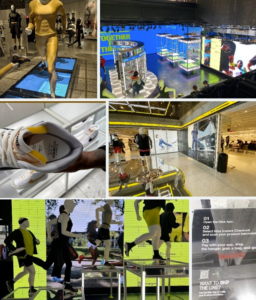
No longer merely transactional spaces, these environments now cater to an inherent human desire for social connections and escapism from the monotony of home-bound routines. As retail spaces pivot towards crafting immersive experiences, a fusion of innovative elements – immersive spaces, digital-physical integration, audience-specific engagement, captivating visuals, and personalized interactions – forms the bedrock of impactful retail experiences. Notable exemplars like LEGO, Google, Puma, Dyson, and Nike adeptly weave these elements into their stores, offering not just products but narratives and personalized journeys, setting new benchmarks for experiential retail excellence in the post-pandemic era. These pioneers not only redefine the purpose of physical stores but also showcase the transformative power of customer-centric, experiential retail, setting a new paradigm for the store of the future.
